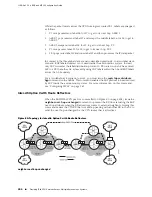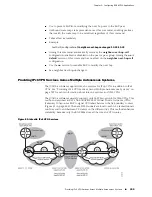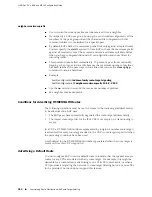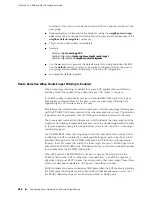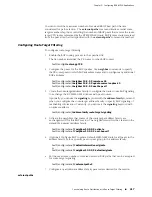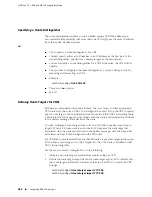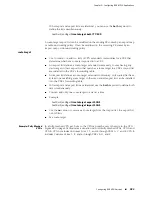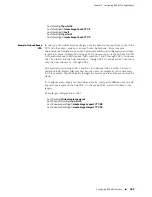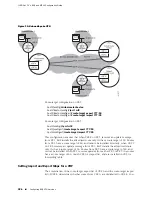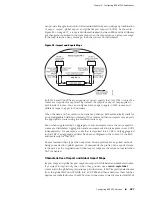
neighbor maximum-prefix
■
Use to control how many prefixes can be received from a neighbor.
■
If you specify a BGP peer group by using the
peerGroupName
argument, all the
members of the peer group inherit the characteristic configured with this
command unless it is overridden for a specific peer.
■
By default, BGP checks the maximum prefix limit only against accepted routes.
You can specify the
strict
keyword to force BGP to check the maximum prefix
against all received routes. The accepted and received routes will likely differ
when you have configured inbound soft reconfiguration and route filters for
incoming traffic.
■
This command takes effect immediately. To prevent a peer from continually
flapping, when it goes to state idle because the maximum number of prefixes
has been reached, the peer stays in state idle until you use the
clear ip bgp
command to issue a hard clear.
■
Example
host1(config-router)#
address-family route-target signaling
host1(config-router-af)#
neighbor maximum-prefix 10.1.2.3 100
■
Use the
no
version to remove the maximum number of prefixes.
■
See neighbor maximum-prefix.
Conditions for Advertising RT-MEM-NLRI Routes
The following conditions must be met for routes in the route-target address family
to be advertised to a BGP peer:
1.
The BGP peers have successfully negotiated the route-target address family.
2.
The import route-target list for the IPv4 VRF is not empty or is transitioning to
empty.
In a VRF, a RT-MEM-NLRI attribute represented by (origin AS number:route target)
is advertised for every route target added to the VRF's route target import list when
the preceding conditions have been met.
A withdrawal for the RT-MEM-NLRI attribute is generated when the route target is
removed from this VRF's import list.
Advertising a Default Route
You can configure BGP to send a default route to indicate that the speaker accepts
routes for any VPNs associated with any route target. For example, this might be
desirable for a route reflector advertising to one of its PE router clients, or when a
VPN provider is migrating the network to route-target filtering but one or more PEs
in the provider's network do not support this feature.
414
■
Constraining Route Distribution with Route-Target Filtering
JUNOSe 11.1.x BGP and MPLS Configuration Guide
Summary of Contents for BGP
Page 6: ...vi ...
Page 8: ...viii JUNOSe 11 1 x BGP and MPLS Configuration Guide ...
Page 37: ...Part 1 Border Gateway Protocol Configuring BGP Routing on page 3 Border Gateway Protocol 1 ...
Page 38: ...2 Border Gateway Protocol JUNOSe 11 1 x BGP and MPLS Configuration Guide ...
Page 234: ...198 Monitoring BGP JUNOSe 11 1 x BGP and MPLS Configuration Guide ...
Page 236: ...200 Multiprotocol Layer Switching JUNOSe 11 1 x BGP and MPLS Configuration Guide ...
Page 542: ...506 Monitoring BGP MPLS VPNs JUNOSe 11 1 x BGP and MPLS Configuration Guide ...
Page 544: ...508 Layer 2 Services Over MPLS JUNOSe 11 1 x BGP and MPLS Configuration Guide ...
Page 610: ...574 Virtual Private LAN Service JUNOSe 11 1 x BGP and MPLS Configuration Guide ...
Page 624: ...588 VPLS References JUNOSe 11 1 x BGP and MPLS Configuration Guide ...
Page 680: ...644 Virtual Private Wire Service JUNOSe 11 1 x BGP and MPLS Configuration Guide ...
Page 724: ...688 Monitoring MPLS Forwarding Table for VPWS JUNOSe 11 1 x BGP and MPLS Configuration Guide ...
Page 725: ...Part 6 Index Index on page 691 Index 689 ...
Page 726: ...690 Index JUNOSe 11 1 x BGP and MPLS Configuration Guide ...





